On the last Sunday workday of the season on Cleaver, one of the tasks was to place 32 reptile refugia or ACO (Artificial Cover Objects) in preparation for a Common Lizard survey (this was 1st March before the restrictions were put into place). Reptile refugia are simply cut squares of roofing felt, wood or metal that holds warmth and shelter, in the hope to attract cold blooded reptiles.
Spring 2020 at Cleaver Heath
Cleaver Heath c. A Walmsley
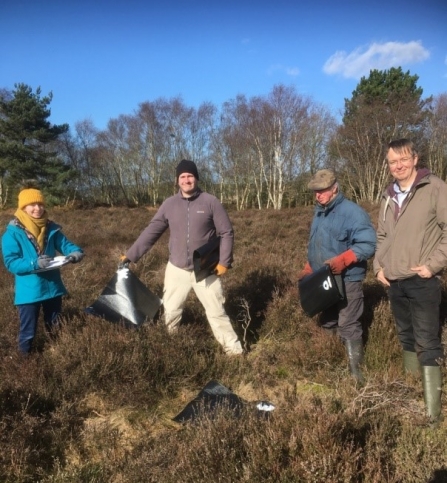
c. Alan Irving
Local reptile expert Tom Doherty-Bone showed us how to set out the refugia in suitable locations. Most of them were within the heather in the upper and lower part of the reserve. The others were placed in the relatively bare areas earmarked for our heathland restoration project. We placed them in a sequence to make them a little easier to check. They were all numbered and the GPS coordinates recorded (four-digit OS grid).
Cheshire Wildlife Trust provided guidance from ARG UK on the best way to carry out surveys, including weather conditions and timing. I’ve been keeping an eye on the refugia as I pass round the reserve and did dedicate one of my exercise walks in April, to a proper survey. Although, I haven’t yet spotted anything myself, Tom tells me of third party reports of sightings, including the photo of a dead lizard he thinks might have been regurgitated – ugh! I found lots of ants however. It is a shame that green woodpeckers aren’t able to lift the refugia, as they would have an endless supply of tasty food.
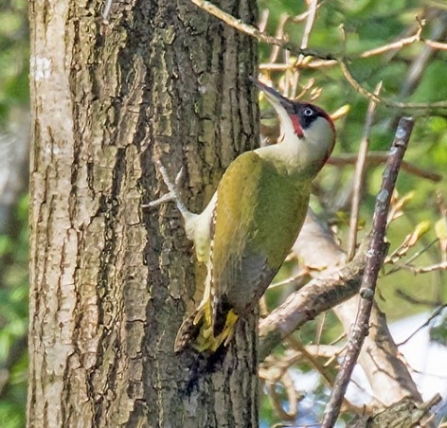
c. Frank Burns
In fact, there has been constant green woodpecker activity within the reserve and in the nearby gardens over the last month. Local resident Frank Burns has kindly supplied me with this excellent photo of a male which he and my wife watched climbing the large Scots pine one afternoon. I’m pretty sure there’s at least a pair present. During one of my early morning Common Bird Census ‘exercise walks’, I watched a female posing on a tree while another called from some distance away.
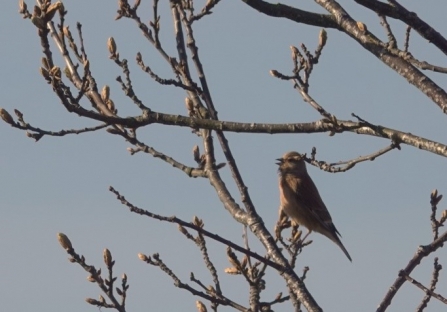
c. Alan Irving
I’m also pleased to report that we have at least one singing linnet present again. This means that all the usual birds that we think breed here are back in town. The dates of when I heard the visitors singing in the reserve this year are as follows:
Chiffchaff, 20th March
Blackcap, 1st April
Willow warbler, 15th April
Whitethroats have been a bit scarce on the reserve in recent years. I have however watched one singing on Heswall shore this week, but have so far seen none up here.
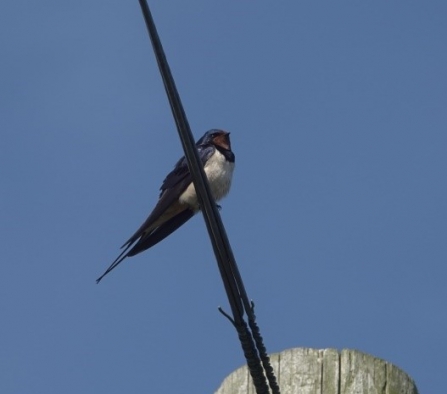
c. Alan Irving
The Oldfield Farm swallows’ arrival pattern has been slightly different this year. The first arrived on 6th April (a few days early) followed by sporadic sightings since. It might be that some of these are just passing through. Normally, by mid-April the numbers have grown to around a dozen making use of the farm stables. I haven’t seen any house martins in Oldfield yet, although I have seen them feasting on insects above Heswall sewage works – always a good place to look for birds.
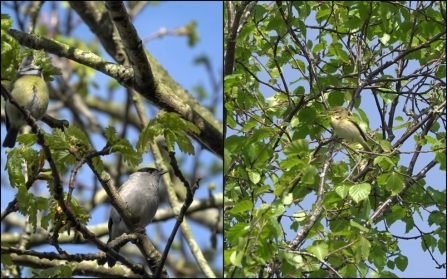
c. Alan Irving
Sadly, the annual Dawn Chorus Walk through Cleaver and Heswall Dales has had to be cancelled this year. However here are a couple of photos of this year’s singing warblers instead: blackcap and willow warbler. I’m happy to report that there are still at least two males singing on the reserve.
The European gorse has been looking stunning this spring. As you can see, there are plenty of insects, including this red-tailed bumblebee, taking advantage of the blossom.
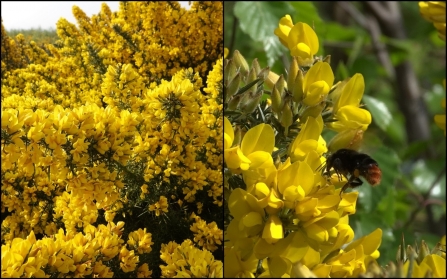
c. Alan Irving
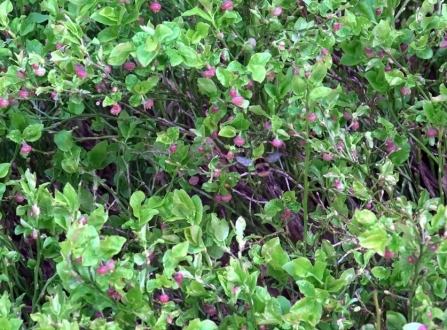
c. Alan Irving
Another plant doing really well is bilberry. As previously noted, this plant grows widely in the main Heswall Dales but is restricted to a small, but expanding, area within our managed scrub. It’s currently developing flowers and is also being heavily used by insects.
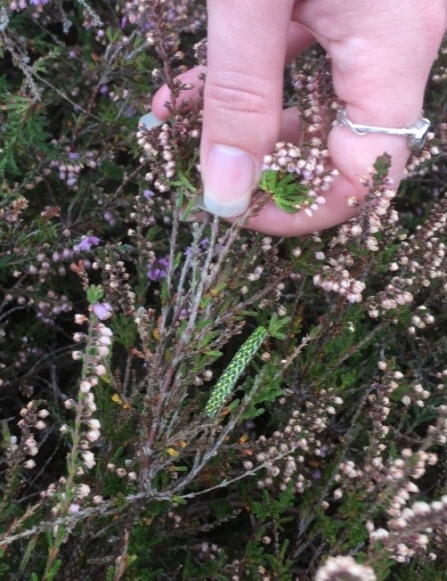
c. Alan Irving
On the subject of insects, while conducting one of our three-yearly heathland condition surveys last September, we came across this lovely green and yellow caterpillar.
I sent the photo to our county moth recorder and fellow Cheshire Wildlife Trust blogger, Steve Holmes, who confirmed that it was the larva of a beautiful yellow underwing moth and. As a relatively rare sighting, it’s been included in his annual report along with my photo.
As a parting shot, I leave you with a recent sunset photo – now well over Liverpool Bay.

Alan Irving

